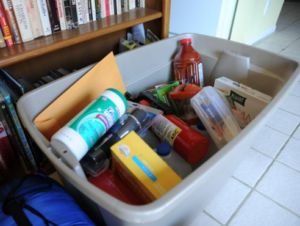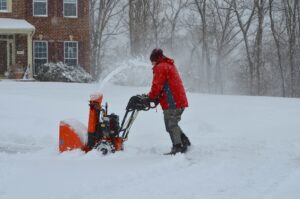By R. R. Fletcher, Contributing Writer

REGION – Cold weather can be challenging. And the fall and winter climate in Massachusetts requires special care and attention for those with chronic health conditions such as diabetes or vascular disease.
Colder temperatures increase the risk of hypothermia. Hypothermia is prolonged exposure to cold, which causes the body’s core temperature to fall below 95 degrees F (35 C). In addition, snow, rain, and wind can lower a body’s temperature. Wind can be dangerous because it can eliminate the layers of warm air that protect a body. For example, the chilling effect of a 30-mile per hour wind in 30 degrees equals 15 degrees Fahrenheit.
Some common symptoms of hypothermia include shivering, confusion, sleepiness, bluish complexion, and loss of memory or muscle coordination.
Persons with diabetes are at higher risk
Over the winter months, people of all diabetes types tend to have higher HbA1c levels. Cold hands can decrease the desire to test blood sugar levels. Inactivity and holiday overeating can adversely affect blood sugar levels as well.
Each year, Massachusetts hospitals report increased admissions for diabetic patients with hypothermia. Hypothermia is usually a sign of severe hypoglycemia (low blood sugar).
Another common chronic health condition is cardiovascular disease.
Your heart and colder weather
Those with coronary heart disease often suffer chest pain or discomfort in cold weather.
Whether you are suffering from general hypertension or congestive heart failure, colder weather can affect your heart and health. Cold weather requires the heart to work harder to keep the body warm.
As temperatures drop, your blood vessels constrict so the heart can focus on sending blood to the brain and essential organs―resulting in chest pain or discomfort in cold weather. Also, during the colder months, there is a higher risk of blood clot formation―resulting in a heart attack or stroke.
Staying healthy and safe
Here are a few tips to minimize colder weather risks.
Ensure the indoor temperature remains above 18-20 C (65-68 F).
And dress warmly, in layers. Hypothermia is a risk even indoors due to the decreased circulation, reduced activity, chronic illness, and some medications.
If you live alone, designate an emergency contact or someone to check on you daily during cold weather. If conditions make it unsafe to venture out, telephone or video chat with someone daily.
Supply your emergency contact with a list of your doctors, medications, and your commonly used retailers that deliver―including pharmacies. Or consider changing your prescriptions to home delivery.

Prepare for storms and possible power outages
Create an emergency kit and store it in an easily accessible place. It should contain candles, matches or a lighter. Also needed are flashlights, a battery-powered or crank lamp, a radio, fresh batteries, canned fuel, blankets, a small knife, can opener, bottled water, and non-perishable foods. A fireplace can provide heat and a method for cooking―stock up on wood. And finally, keep a list of emergency numbers handy.
Take precautions if you go out during severe weather
Always dress as if you will be outside in the cold for an extended period. Even a quick shuffle to the mailbox can be dangerous without the proper attire. And whether inside or out, dress in layers. It acts as insulation to keep the body warm.
Wearing a hat or headscarf is a good idea as heat dissipates through your head. Keep your hands, feet, and ears warm. They are particularly prone to frostbite.

Photo/Bobgatty/Pixabay
Check the weather and keep your car maintained and the gas tank full. And just like for the home, put together an emergency car kit. Throw everything in a backpack for easy carrying. Include a flashlight with extra batteries, emergency flares, blankets, hats and mittens, non-perishable snacks, and water. Other necessities include a cell phone, an emergency charging bank and cables to contact help in a storm. Cash, a few days of prescriptions, and jumper cables for your car’s battery are a good idea. An auto club membership such as AAA or OnStar is also a wise choice. These make great gifts too.
If you must go out in severe weather alone, let someone know where you are going, when you should be back and the route you will probably take, just in case.
The breathtaking display of fall’s colors and the spectacular beauty of pristine winter snow in Massachusetts can be beautiful, even magical. And with a little preparation and forethought, winter weather can be enjoyed in safety and health.
RELATED CONTENT:
Regular exams are a key step in maintaining eye health (fiftyplusadvocate.com)
Pets have the power to improve our health and well-being (fiftyplusadvocate.com)
Sleep loss puts family caregivers at risk for their own health problems (fiftyplusadvocate.com)












